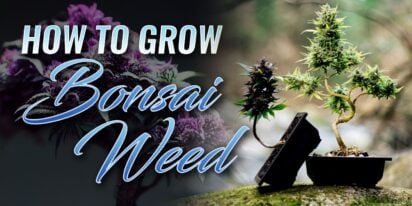
Are You 18 Or Over?
YesOr
No By clicking yes, you certify that you are over 18. By using this website, you agree to our legal disclaimer.605+ Cannabis Strains over 20 Breeders worldwide.
Table of Contents

Table of Contents
The story of weed’s cultural transformation in the 2000s is intriguing. Moving beyond its countercultural origins, cannabis started being seen from a medical perspective. The rise of medical marijuana as a viable treatment sparked discussions about its therapeutic uses. This change not only affected how the public viewed cannabis but also opened doors for exploring a wider range of weed strains in a more sophisticated way. It was a time of transition when cannabis shifted from the outskirts of society to a more accepted and integrated position.
Understanding this shift is important in recognizing the variety of strains that emerged in the 2000s. As societal attitudes changed, there was a growing interest in a more refined cannabis experience. Exploring and appreciating different strains became more than just a recreational activity; it became a nuanced journey into the potential therapeutic benefits of each strain’s unique combination of cannabinoids and terpenes.
The significance of weed strains lies in the complex interaction of compounds within the plant. Each strain is like a botanical orchestra, where cannabinoids and terpenes work together to create the overall effects and characteristics. As users looked for a more personalized experience, the demand for specific strains increased. This growing understanding of each strain’s subtleties played a major role in the revival of cannabis in the 2000s.
Factors such as flavor, aroma, and the unique combination of cannabinoids became crucial factors in determining a strain’s popularity. During this time, there was a rise in cannabis enthusiasts becoming connoisseurs, similar to wine lovers appreciating the nuances of different grape varieties. The importance of weed strains went beyond just recreational use; it became a cultural and medicinal exploration, contributing to the diverse offerings in the cannabis market.
OG Kush holds a monumental position in the world of cannabis. Originating in California, it serves as a symbol of the West Coast’s impact on the industry. Besides its legendary reputation, OG Kush played a crucial role in shaping today’s cannabis culture. Its journey from hidden beginnings to widespread acknowledgment mirrors the overall transformation of weed in the 2000s. The rise of OG Kush exemplifies how the cannabis landscape evolved, influenced by the West Coast’s unique contributions to the industry during that era.
Sour Diesel, renowned for its strong scent and invigorating effects, became the dominant force in the diesel category during the 2000s. Its unique characteristics made it a cultural symbol, celebrated not only for its recreational uses but also for its ability to boost creativity. Exploring the journey of Sour Diesel offers insights into the dynamic connection between strains and the prevailing cultural spirit. This strain played a significant role in shaping the cultural landscape of the 2000s, influencing how people perceived and embraced cannabis during that era.
Blue Dream, a seamless combination of sativa and indica genetics, rose to fame for its well-balanced effects. Not only cherished by cannabis enthusiasts, but Blue Dream also mirrors the industry’s move toward hybrid strains. Examining its traits reveals the intricate craftsmanship behind strain development and the increasing desire for a variety of experiences. The popularity of Blue Dream signifies a broader trend in the cannabis world, showcasing the demand for hybrids that offer a harmonious blend of uplifting and relaxing effects.
Northern Lights, with its calming effects and sweet, earthy taste, stands out as a guiding light in the cannabis world. Originating in the ’80s and maintaining its significance in the 2000s, Northern Lights showcases the enduring charm of traditional strains. Its journey over the decades underscores the timeless quality of certain varieties in the constantly changing cannabis market. The enduring popularity of Northern Lights illustrates how classic strains can maintain their relevance, offering a consistent and reliable experience for cannabis enthusiasts across generations.
Girl Scout Cookies, a hybrid wonder with a delightful blend of sweet and earthy flavors, enjoyed notable success in the later part of the 2000s. Its ascent to fame reflects the period’s exploration of hybrid strains, aiming to cater to a diverse range of preferences. Examining the journey of Girl Scout Cookies offers a peek into the market dynamics that influenced the cannabis industry. This strain’s popularity showcases the industry’s adaptability, responding to the varied tastes of cannabis users and contributing to the diverse landscape of hybrid strains available in the market today.
The top 5 weed strains from the 2000s have etched their place in the history of cannabis. From the groundbreaking OG Kush to the sweet success of Girl Scout Cookies, each strain contributed to the rich tapestry of the cannabis culture. As we reflect on the past, it’s evident that these strains have not only stood the test of time but have also paved the way for the diverse and dynamic cannabis landscape we know today.
Q: Are these strains still popular today?
A: The popularity of these strains varies, with some maintaining a strong presence, while others have given way to newer favorites. OG Kush and Sour Diesel, with their iconic status, continue to be highly sought after.
Q: Can I grow these strains at home?
A: Yes, you can grow these strains at home, but it’s essential to research their specific cultivation requirements. OG Kush and Sour Diesel, for instance, thrive in controlled environments, while Blue Dream may require additional space for its expansive growth.
Q: Are there any legal considerations when cultivating these strains?
A: Legal regulations regarding cannabis cultivation vary by region, so it’s crucial to be aware of and comply with local laws. Understanding the legal landscape ensures a responsible and compliant approach to cultivation.
Q: What makes these strains unique from each other?
A: Each strain has its unique combination of cannabinoids, terpenes, and effects, contributing to its distinct characteristics. OG Kush’s earthy and piney flavor sets it apart, while Sour Diesel’s pungent aroma and invigorating effects distinguish it from others.
Q: How has the perception of cannabis changed since the 2000s?
A: The 2000s marked a shift in societal attitudes towards cannabis, with increased acceptance and the emergence of medical marijuana contributing to a more positive perception. This shift has paved the way for a more diverse and informed understanding of the plant’s potential benefits.

In the realm of cannabis culture, the practice of "wake and bake" holds a significant place, accompanied by both supporters and skeptics. As exp

Introducing the robust indica strain known as Critical Mass weed, a harmonious fusion of Afghani and Skunk #1 genetics. Delve into its essence,

Fusarium wilt cannabis represents a significant threat to cannabis cultivation, necessitating a comprehensive understanding of its intricacies.

1980s were a time of profound cultural transformation, marked by iconic fashion, music, and movies. Alongside these trends, a unique facet of '8

[ez-toc] In the deep history of cannabis cultivation, there exists a captivating and creative practice that combines the art of cultivation wit

For growers looking to get better yields and healthier cannabis plants, it's important to understand and control the cannabis soil pH levels. pH

[ez-toc] In indoor gardening, maintaining an optimal temperature within your grow tent is crucial for the health and productivity of your plant

[ez-toc] Welcome to the delightful world of cannafudge crafting, where sweetness meets sophistication, and cannabis infusion adds a unique twis

[ez-toc] You’ve finished trimming your weed, but what about those leftover stems? Don’t throw them away! These seemingly useless bits can a

Feeling high can be an exhilarating experience, but it's essential to make the most of it by engaging in activities that enhance the sensation a

Are You 18 Or Over?
YesOr
No By clicking yes, you certify that you are over 18. By using this website, you agree to our legal disclaimer.